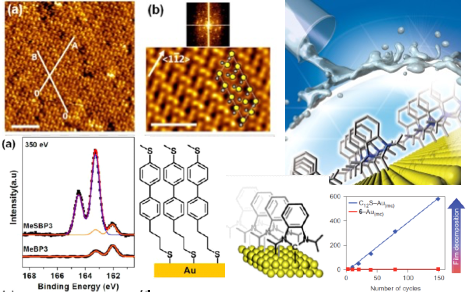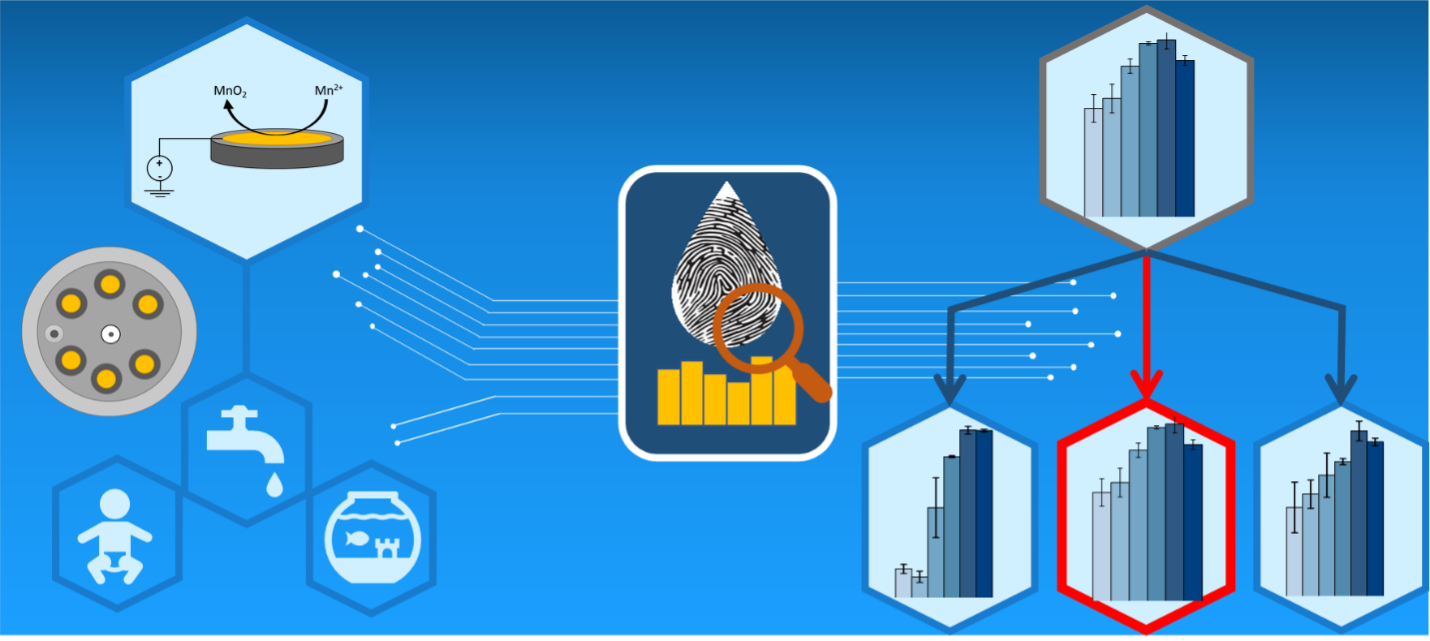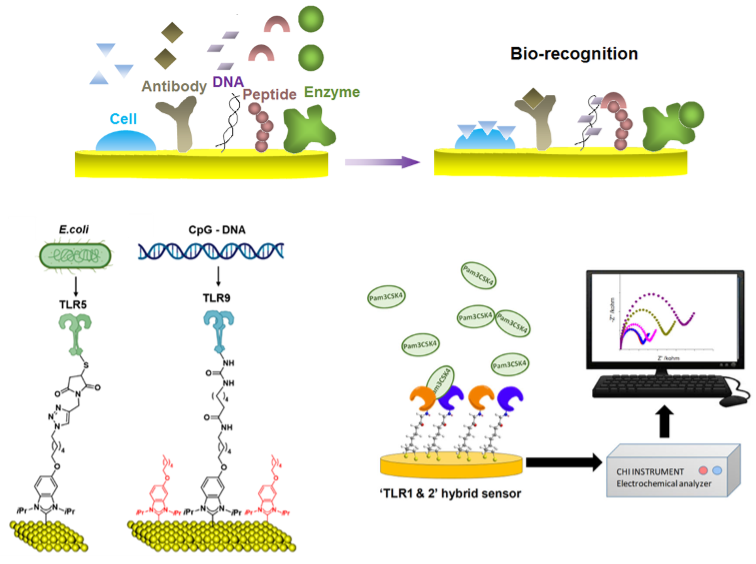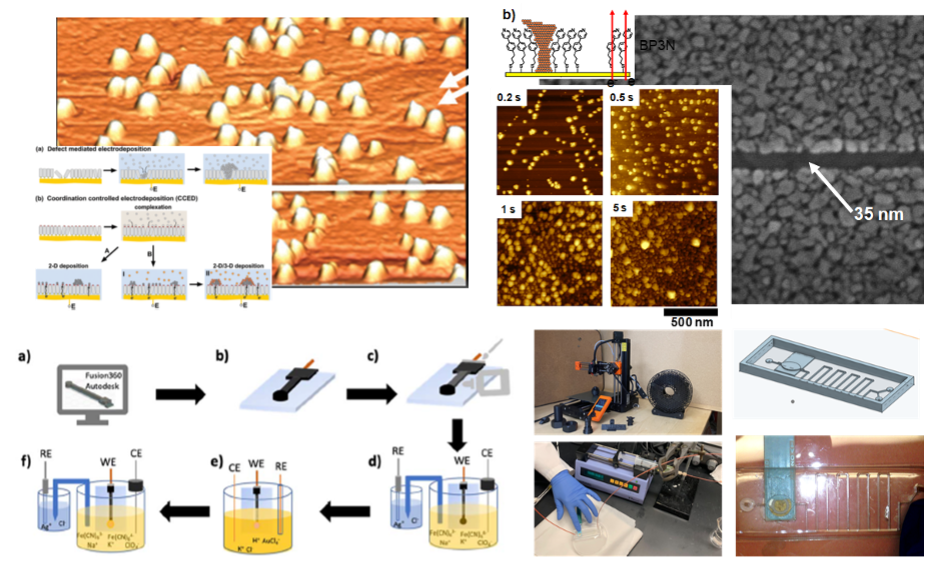Self-assembled monolayer (SAM) is a layer of molecules self-assembled on surfaces. We are interested in studying surface chemistry and properties of these molecules using a combination of microscopic, spectroscopic and electrochemical techniques. The morphology and molecular packings could be revealed using atomic force microscopy and scanning tunneling microscopy, while the chemical compositions can be analyzed using X-ray photoelectron spectroscopy. We are also interested in characterizing charge transfer properties of different organic and biological molecules towards biosensing applications.


Working closely with policy experts and water engineers from Department of Civil Engineering and Beaty Water Research Center, we are reimagining drinking water monitoring, transforming it from the cumbersome and expensive ICPMS to developing a new class of portable and in-line sensing devices. One example of our work is monitoring manganese (Mn) in drinking water, which is a newly regulated contaminant. The drinking water industry has many requirements when designing new techniques to ensure sufficient reliability, accuracy, and precision for both regulatory compliance monitoring and operational monitoring. We have developed two multiplexed detection methods, which are currently under further study towards testing in the drinking water distribution laboratory. We are expanding our studies into different contaminants of emerging concerns.
Low-cost and portable diagnostics for bacterial cells and toxins have great potential to be used for environmental and clinical applications. These techniques are complementary to the existing laboratory-based techniques such as mass spectrometry. There are many challenges in developing ultimate biosensors because many requirements and specifications must be met for industrial applications. We are applying the learning from our surface science in improving the designs of these bacteria biosensors and searching for strategies to create functional and reliable sensor surfaces.


SAM-based template for electrochemical fabrication: The charge transfer properties of surfaces can be tuned using different SAM molecules. By creating surfaces with molecules consisting different electrochemical properties, it is possible to create templates for making metallic micro- and nanostructures. Metallic structures from Au microelectrodes (10 µm) down to Pd/Cu nanoparticles (2-3 nm) were produced using electrochemical deposition methods, which utilize modified SAMs as reusable templates. Our research determined some key conditions in electrochemistry and surface chemistry for metals, such as Cu and Au, and overcomes the challenges in improving the fabrication resolution and deposition selectivity. We are in the process of designing new templates and applications.
Creating 3-D printing-based fabrication techniques:
Building devices by low-cost 3-D printing techniques have been illustrated extensively, especially during this COVID-19 pandemic. We have been investigating methods of making specially designed sensor chips and devices using 3-D printing. While 3-D printing offers flexibility in designs, there are various challenges in translating the designs into useful sensors. We are investigating conditions to utilize different commercially available printing materials in search for balance between thermal stability and printing resolutions.